A bird sporting an impressive triangular crest, half black and half blue, finished off with a definitive black and blue demarcation.
Meet the Stellers Jay
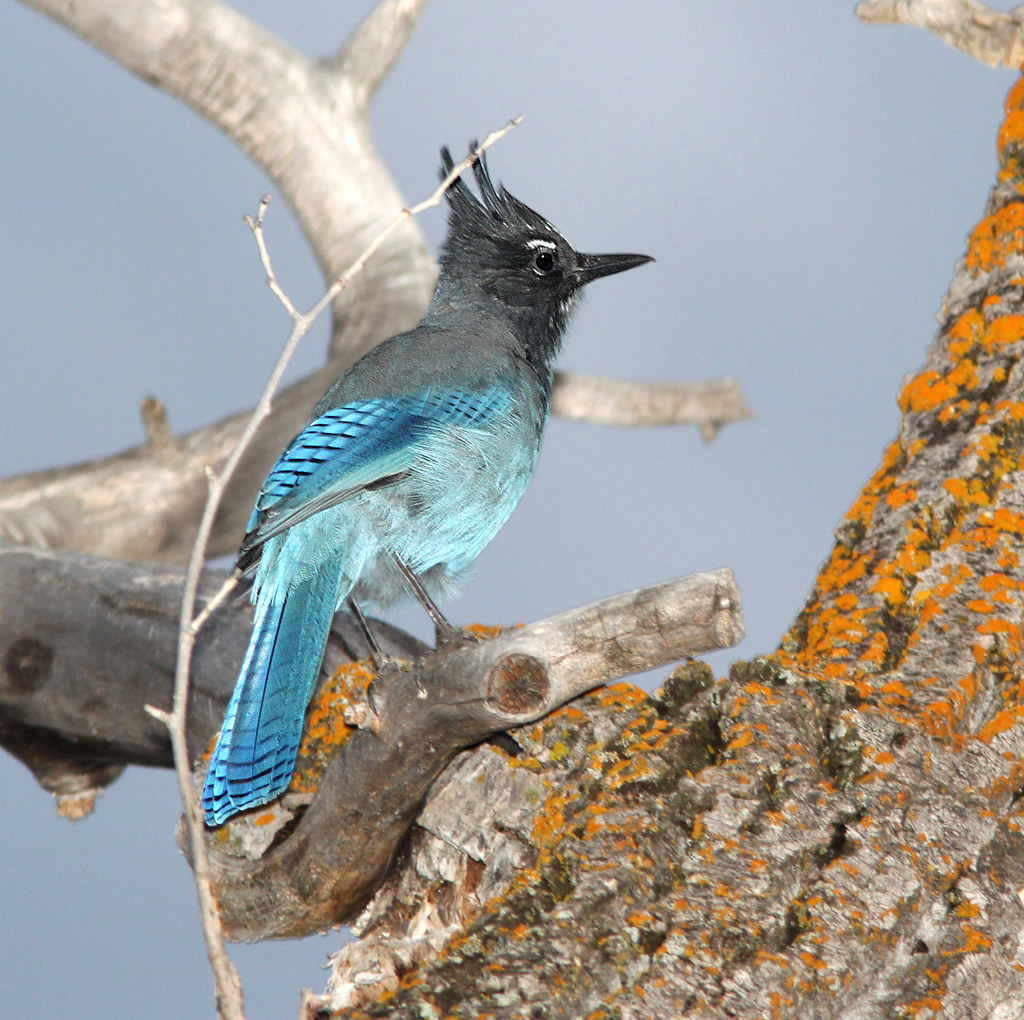
“638 – STELLER’S JAY (8-20-12) just east of wolf creek pass, co (1)” by Sloalan is marked with CC0 1.0.
Steller’s jay (Cyanocitta stelleri) is a jay related to the more well-known Blue jay. From a distance they appear quite dark, missing the white underparts of other jay species. The head is dark black, going almost all the way down the back, while the rest of the body is blue. White markings appear above both eyes but are very easy to miss. A large songbird they have rounded wings and a long full tail. The beak is long, straight, and powerful, while on top of their head sits a prominent triangular crest that stands almost straight up.
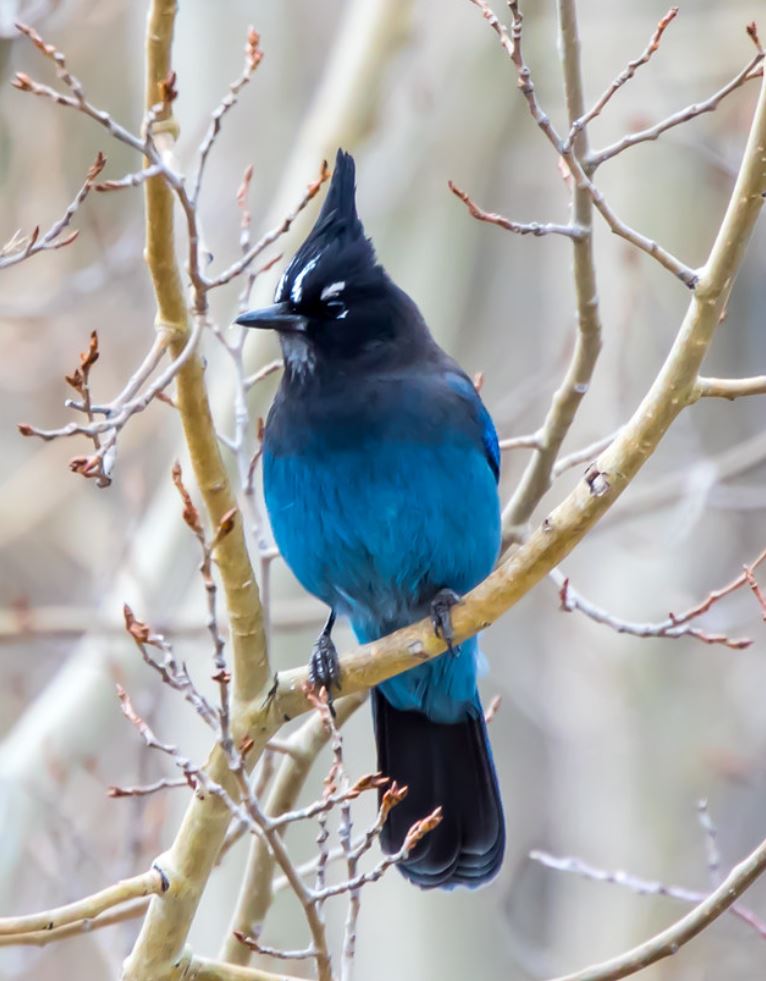
“Steller’s Jay (Cyanocitta stelleri)” (cropped) by sussexbirder is licensed under CC BY 2.0.
The Steller’s Jay is native to western North America. It is also known as the long-crested jay, mountain jay, and pine jay.
They are common in North Idaho, but they occur throughout the higher-elevation coniferous forests coating the western half of the Americas, from Alaska to Nicaragua.

“Steller’s Jay” by Carl T. Bergstrom is licensed under CC BY 2.0.
Stellers Jay primarily prefers to live in coniferous forests, it can be found in other types of forests as well. They can be found from low to moderate elevations, and on rare occasions to as high as the tree line. Steller’s jays are common in residential and agricultural areas with nearby forests.
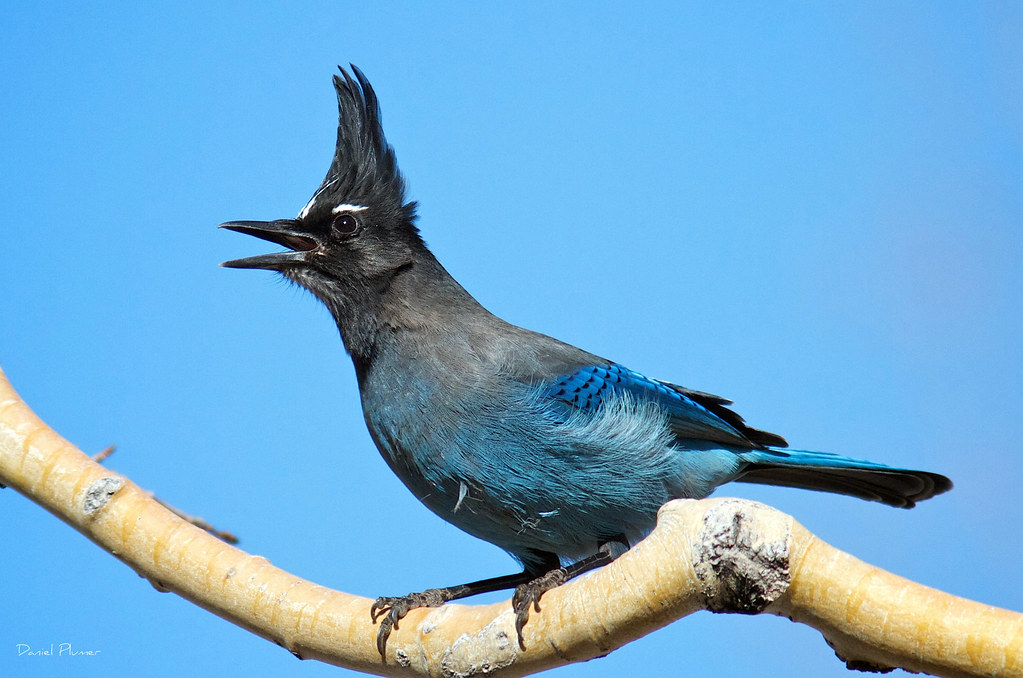
“Stellers’s Jay” by dlplumer is licensed under CC BY 2.0.
Being an omnivores bird, Steller’s jay eats about two-thirds plant matter and one-third animal matter. They find their food both from the ground and in trees. They eat a wide range of seeds, nuts, berries, and other fruit. They also eat invertebrates, rodents, eggs, and nestlings. There have also been some accounts of them eating small reptiles, such as small snakes and lizards.
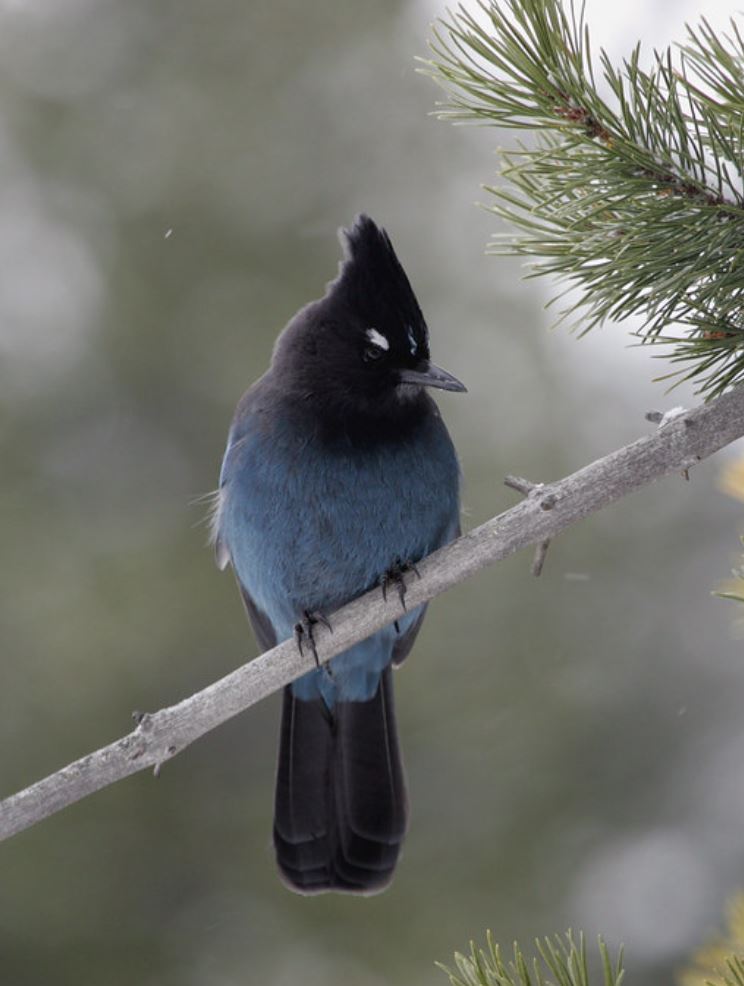
“Steller’s Jay” (cropped) by YellowstoneNPS is marked with Public Domain Mark 1.0.
Steller’s jays remain in monogamous pairs, incubating a clutch of eggs by the female for about 16 days. During this time the male feeds the female. The nest is usually found in a conifer, but can also sometimes be found in the hollow of a tree or awning of a house. It is built using scavenged material, both natural, and from trash, sometimes mixed with mud. Between two to six eggs are laid within during a breeding season, oval in shape they have a somewhat glossy surface, a greenish-blue with brown to olive speckles.
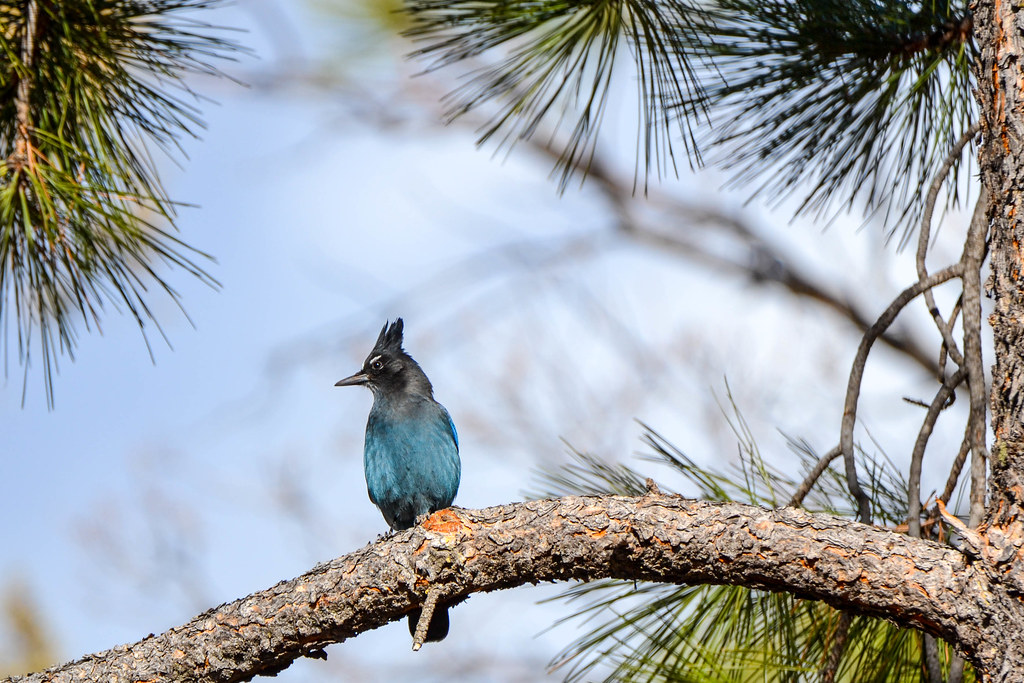
“Durango – Steller’s Jay” by LilTexican is marked with Public Domain Mark 1.0.
Widely spread throughout its range, Steller’s jay sometimes hangs out with other species of jay like the California Scrub jay above. Steller’s jay is regarded as at Least Risk on the IUCN red list.

“638 – STELLER’S JAY (7-13-06) slo co, ca (2)” by Sloalan is marked with CC0 1.0.
You can watch and listen to this bird right here in the video below:




